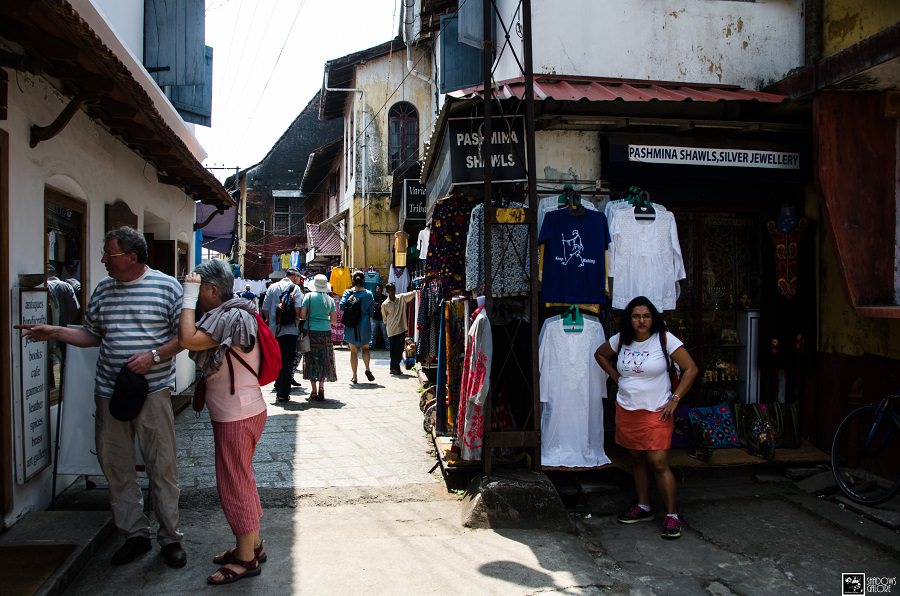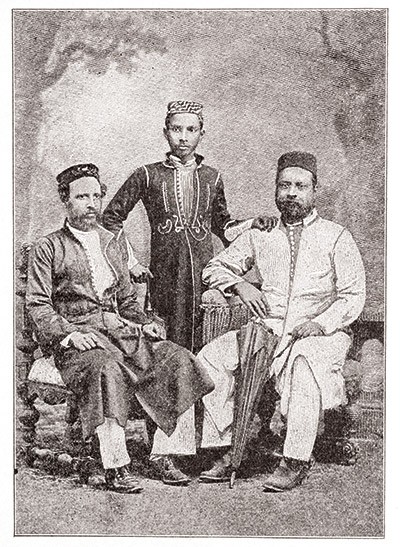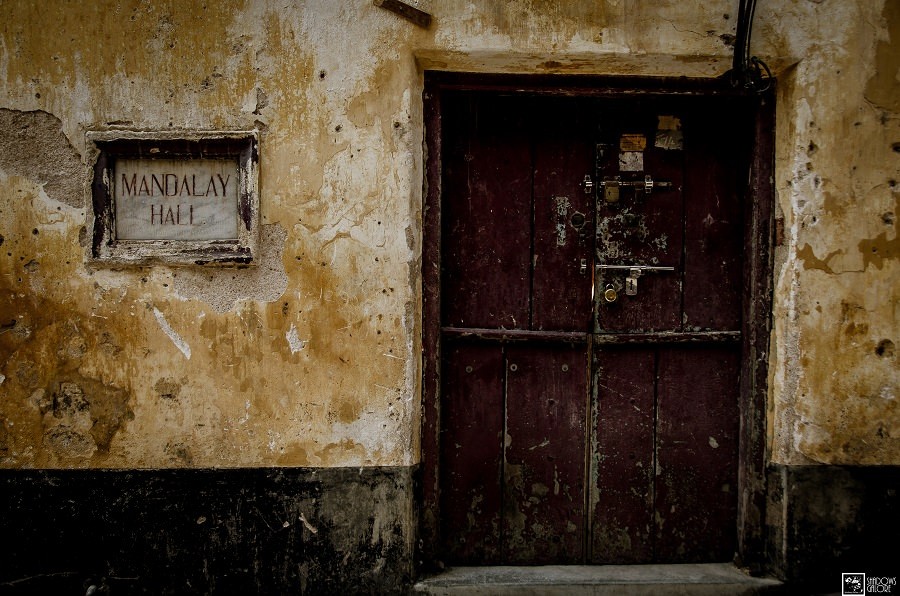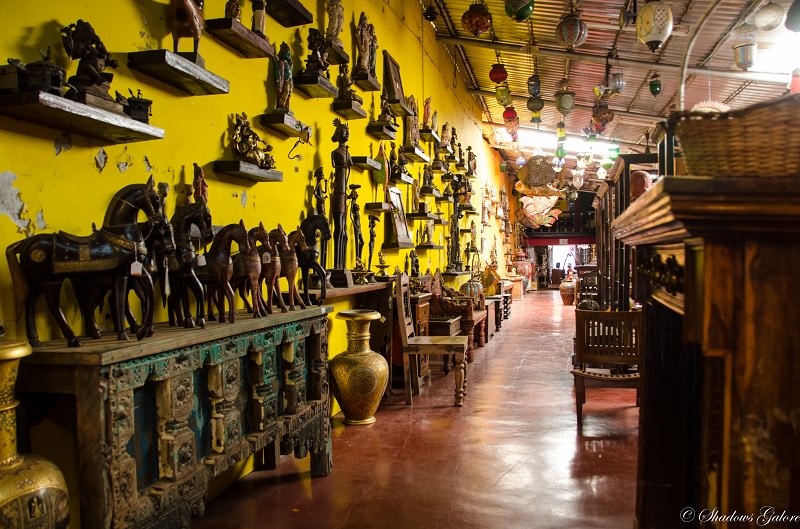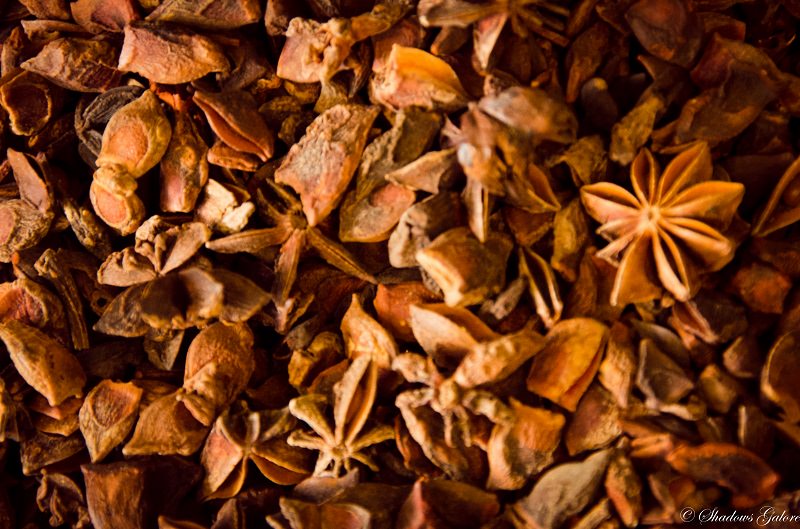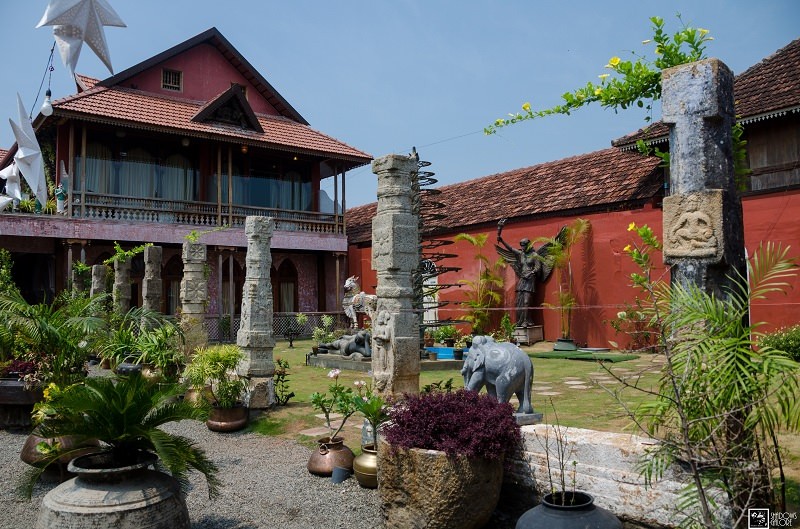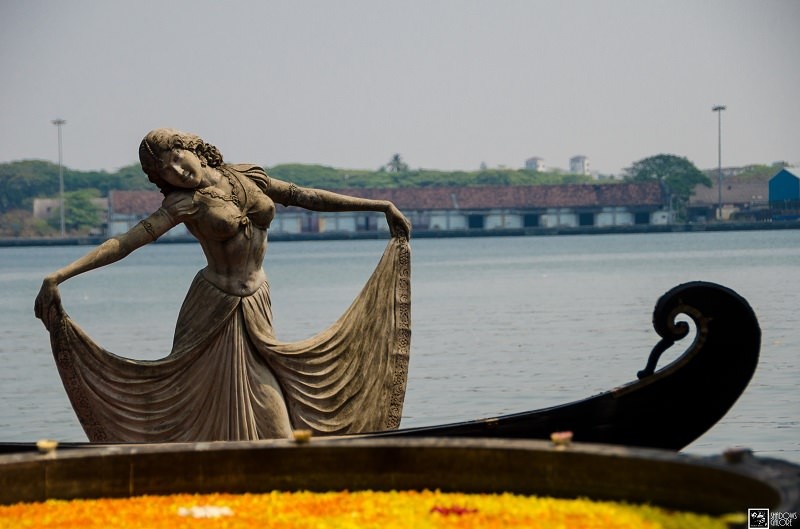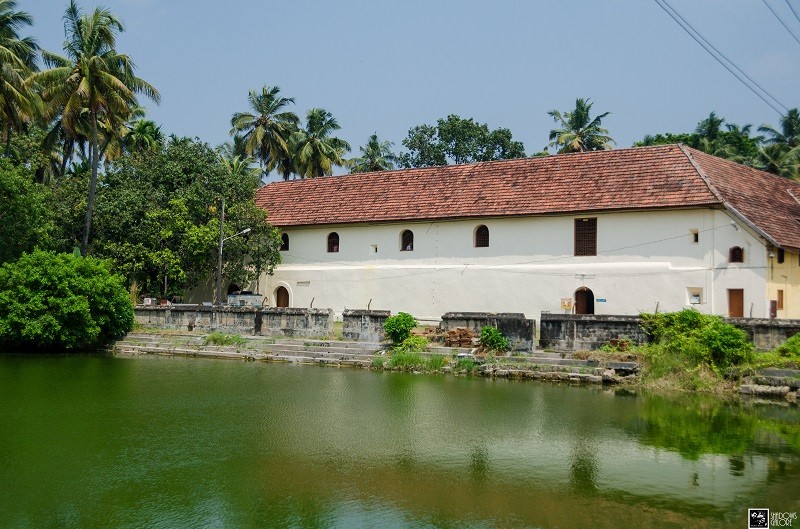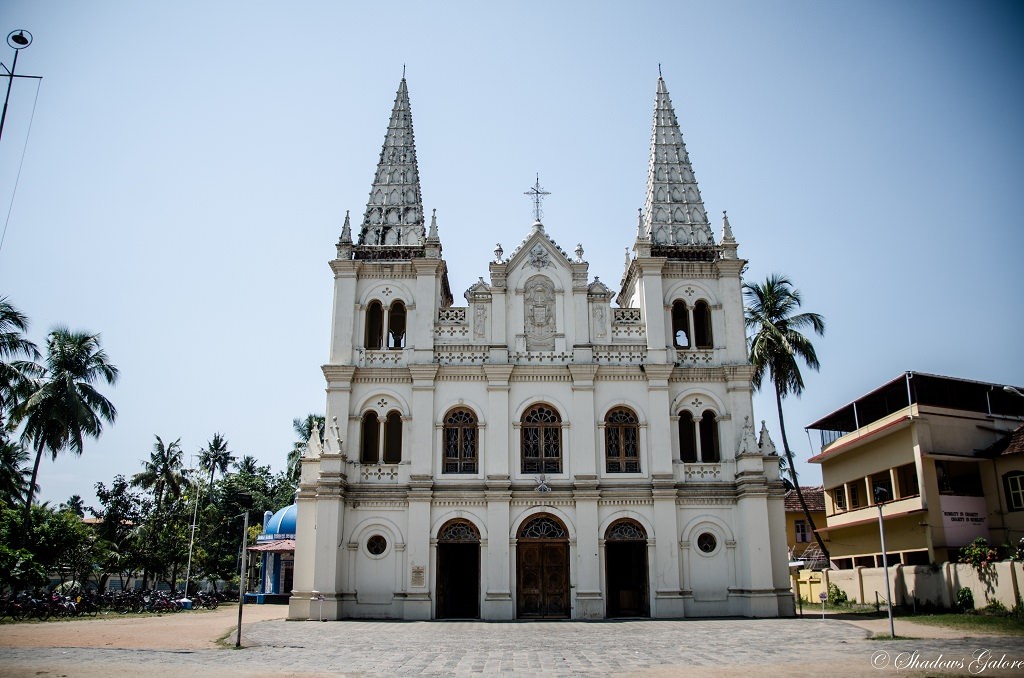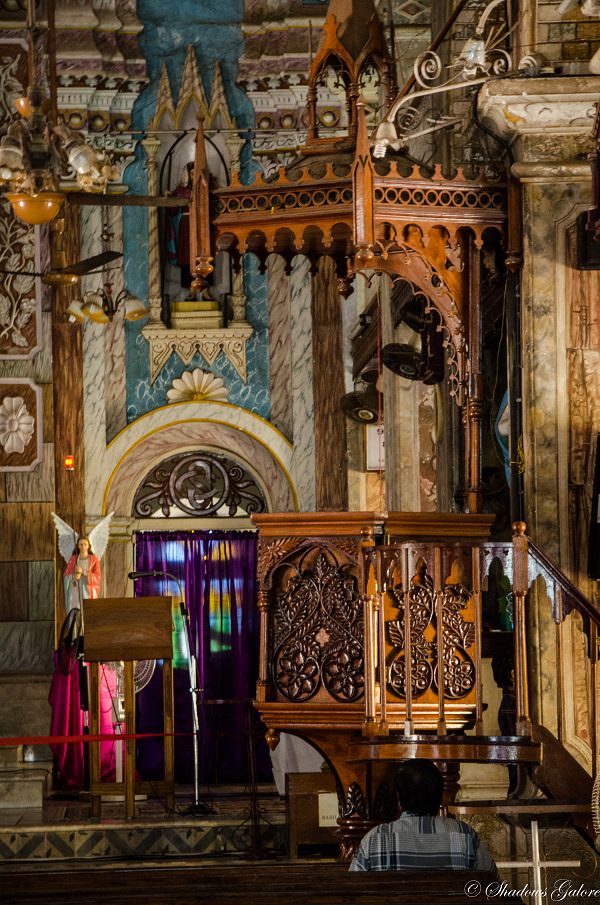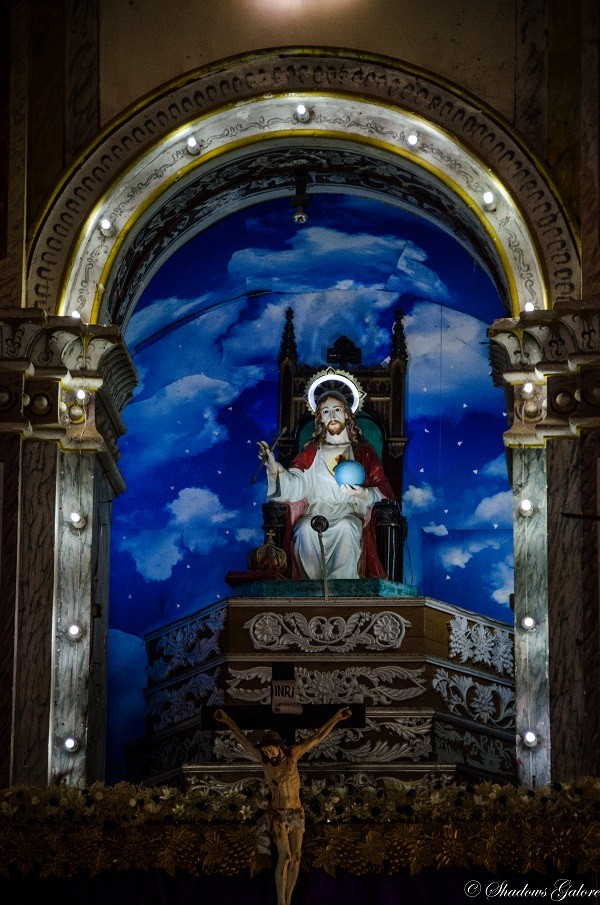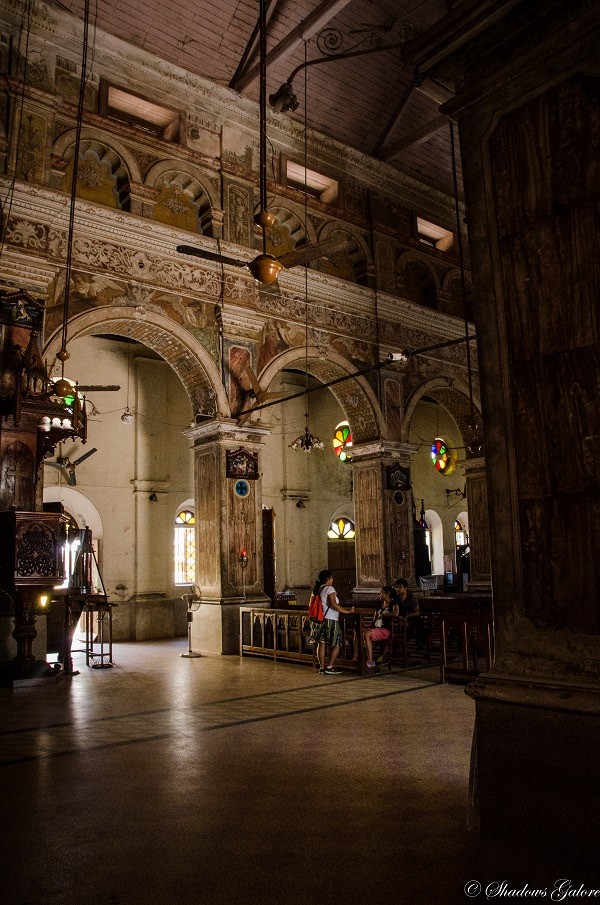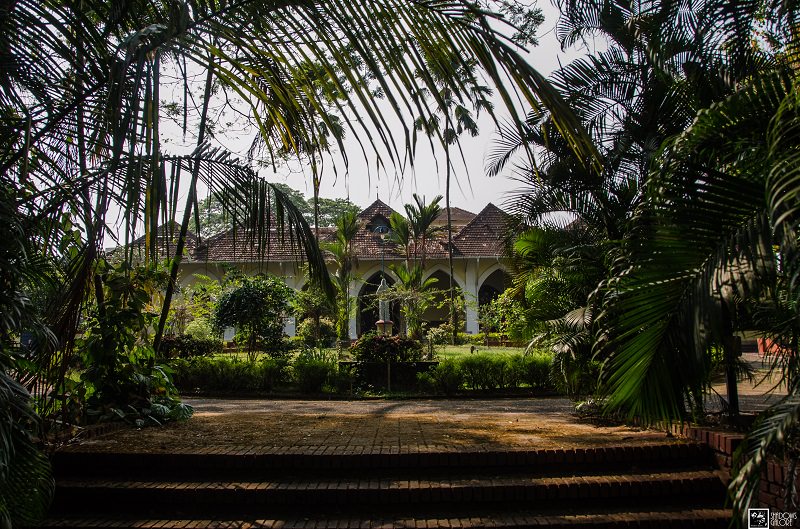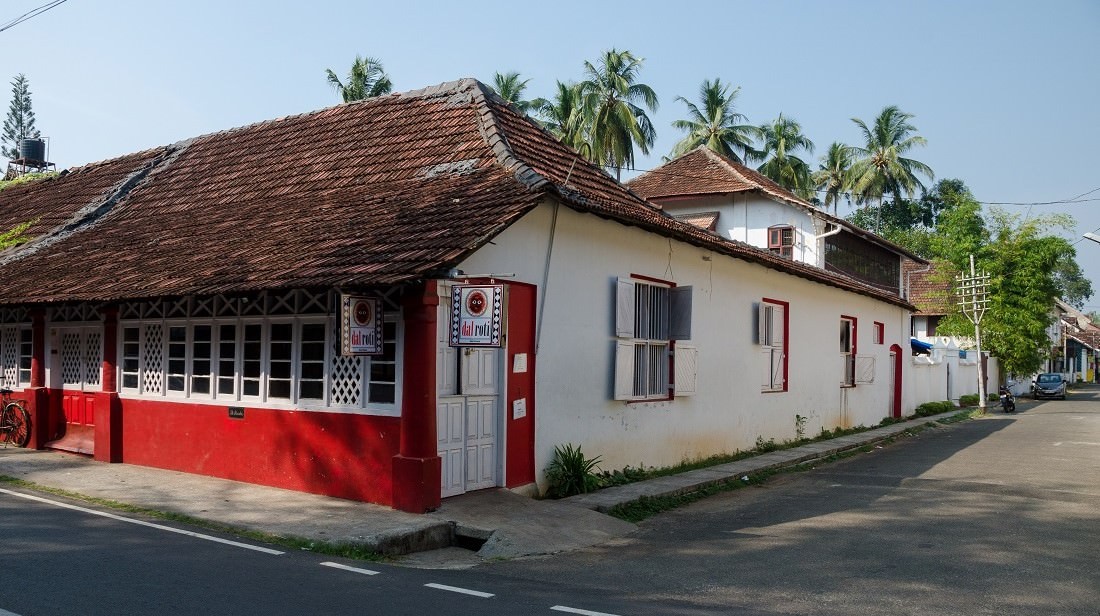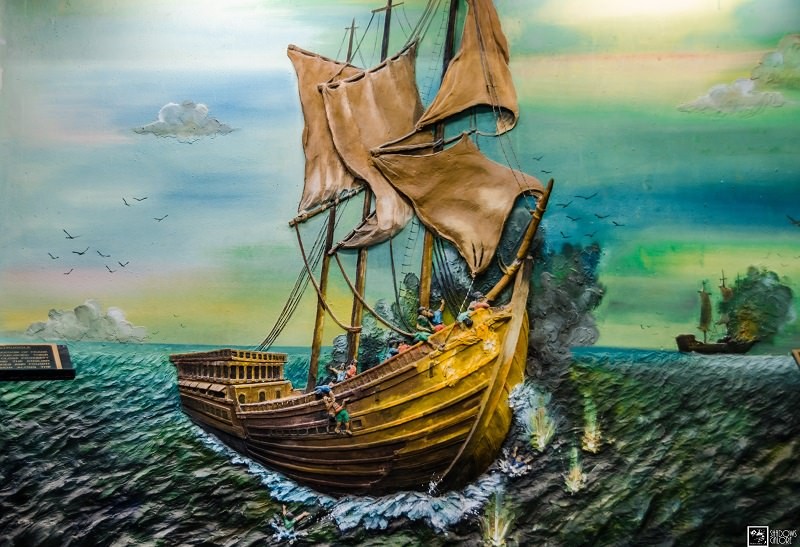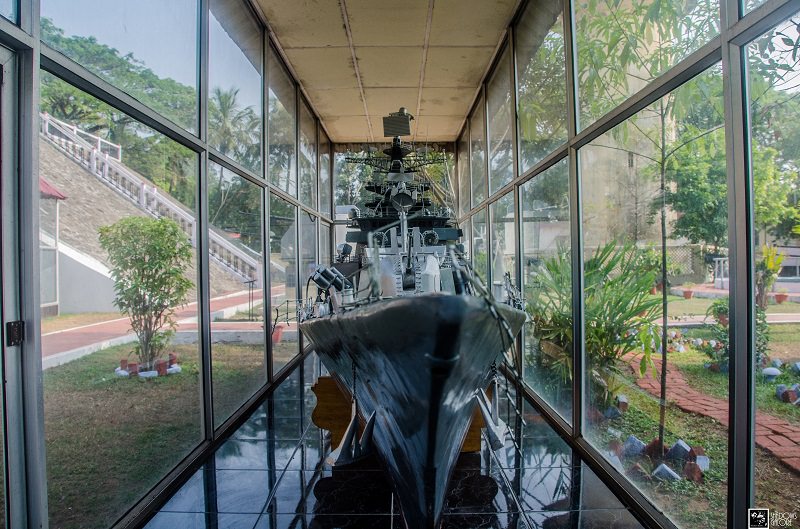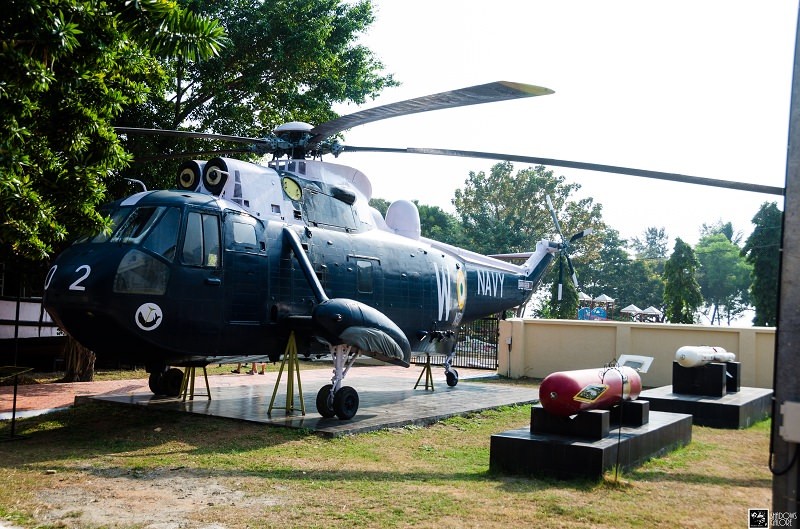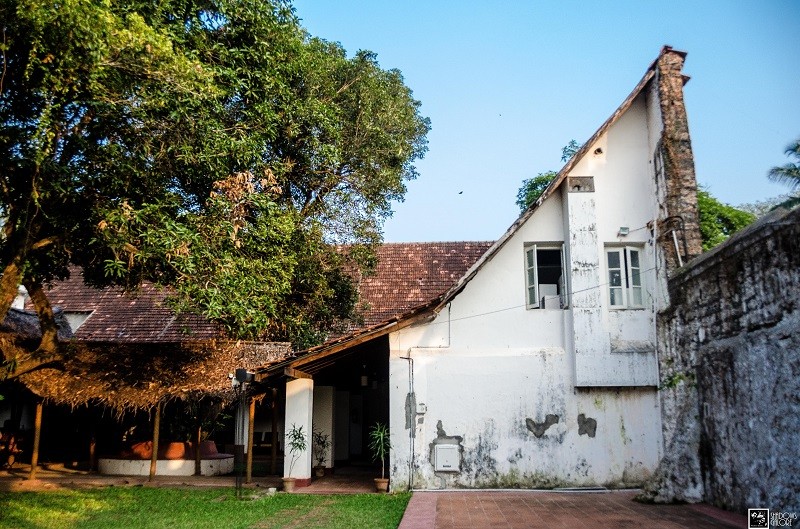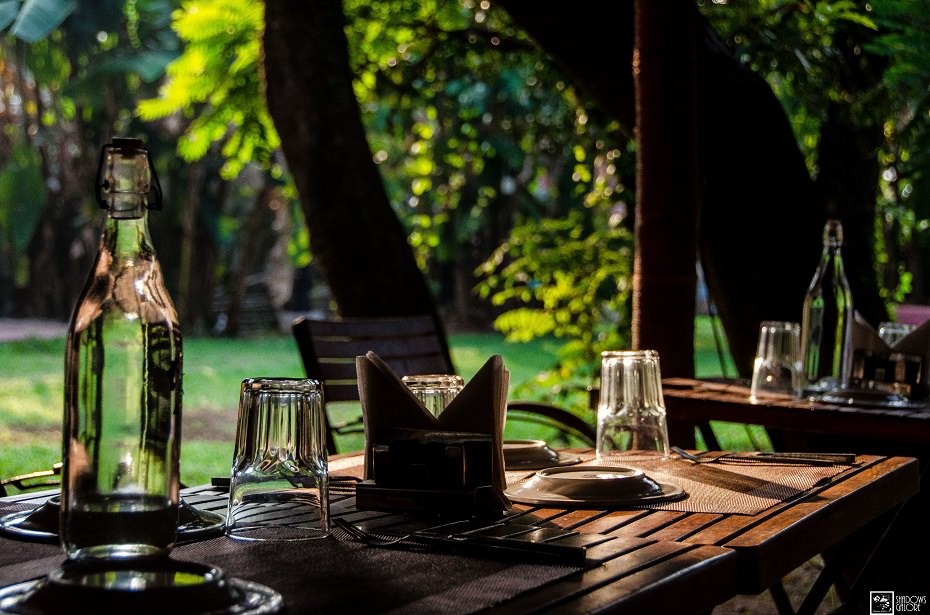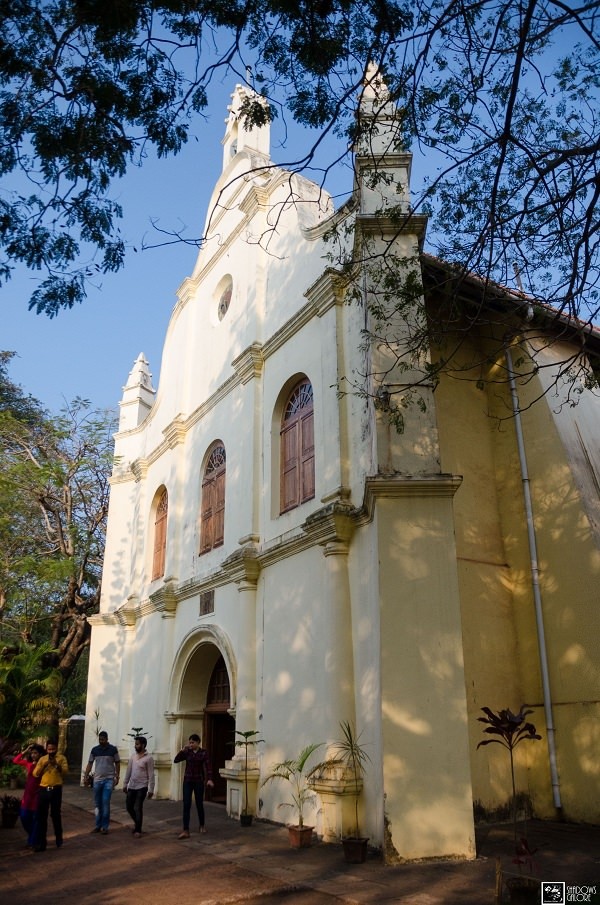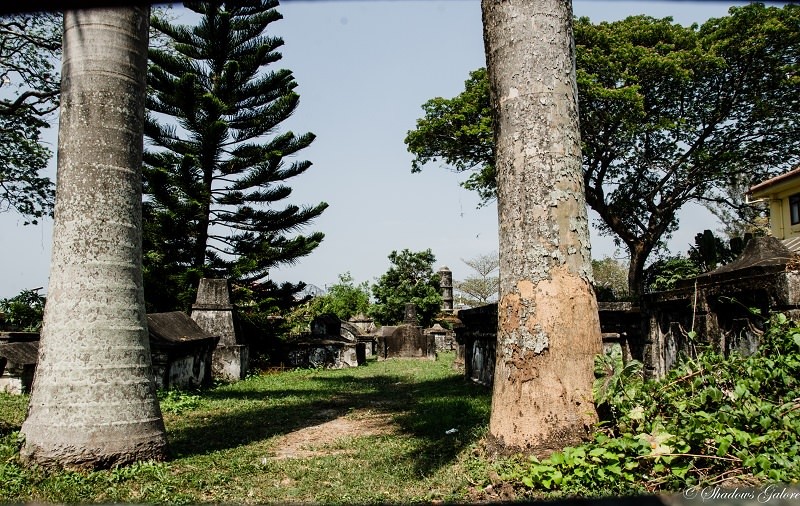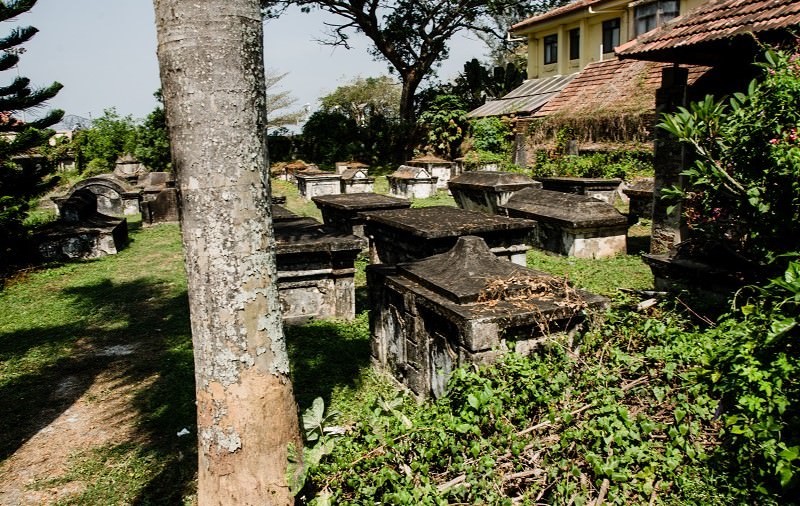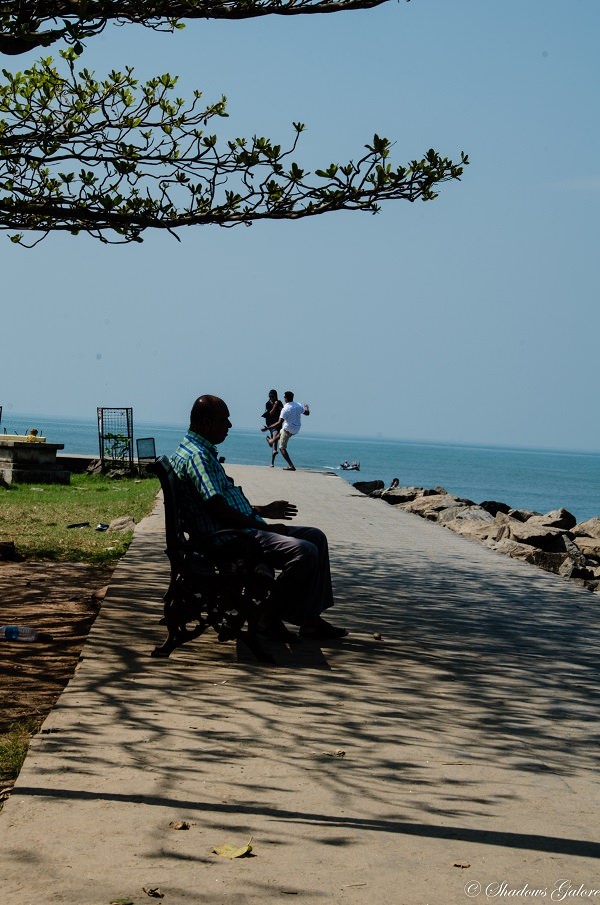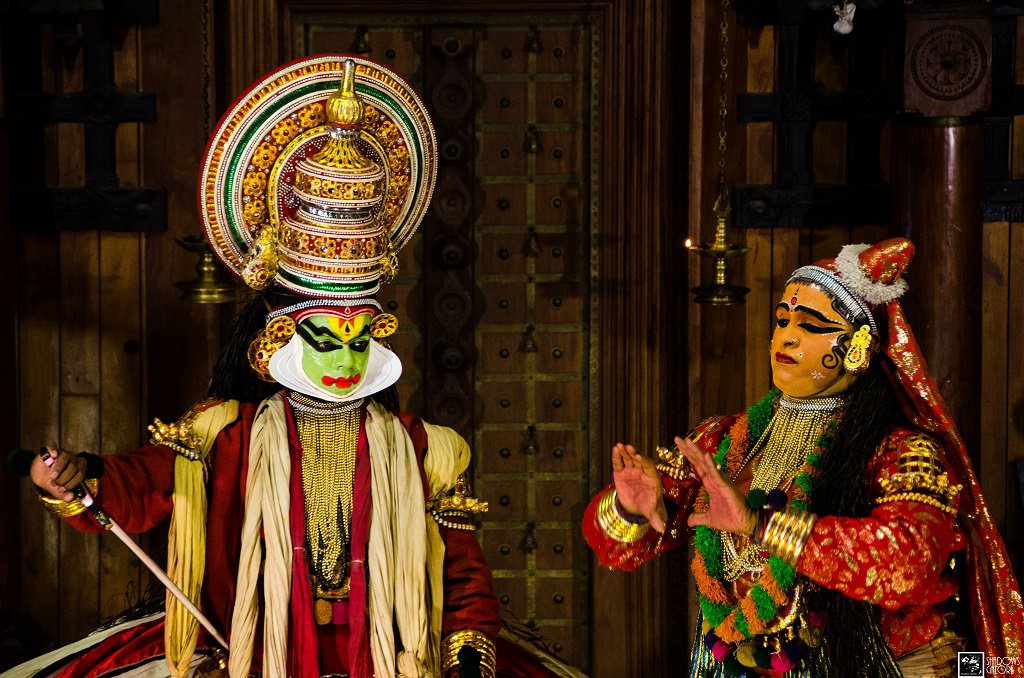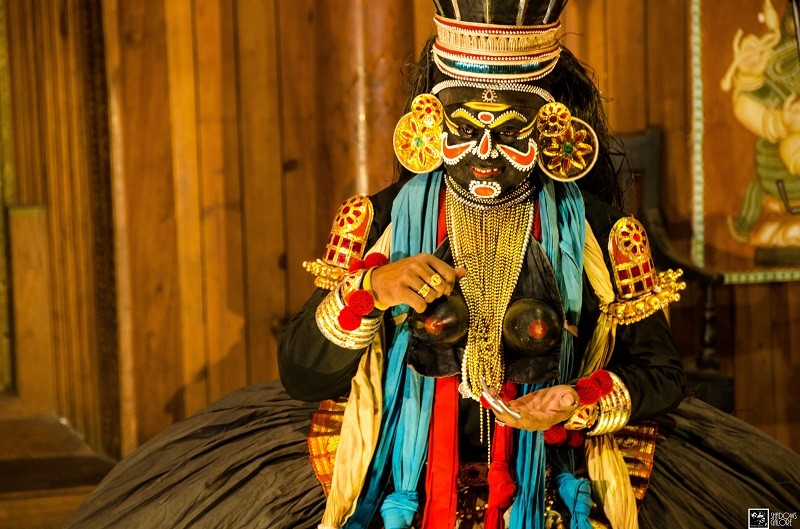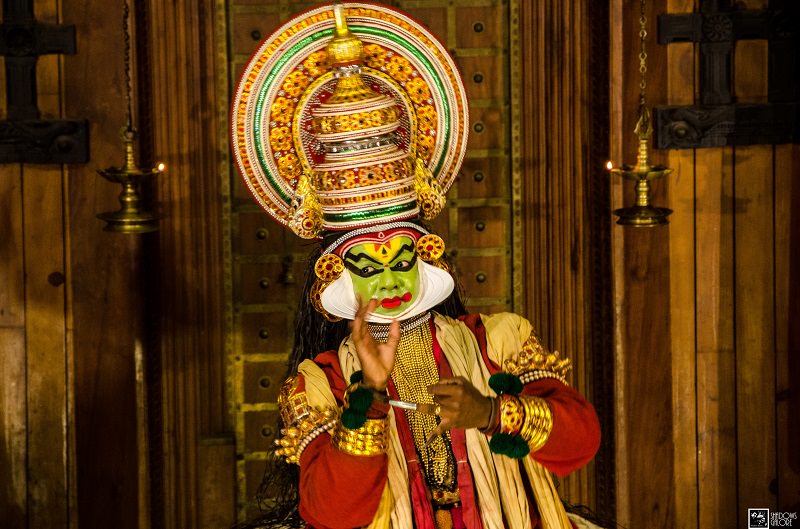The street welcome you with air pleasantly laden with spices, not the sneeze-inducing masaaledar dust of usual Indian bazaars but a sweet aroma of God-knows-what exotica, and you know you have arrived…
As we stepped out from the Uber, the first thing I did was to take a deep breath and let that rich welcoming aroma of the Jew Street lift my mood. This was our second visit to Cochin, and this time we were here with the sole purpose of exploring Fort Kochi on our own. This little world on the fringe of the mighty Cochin has its many little charms, safely tucked in folds of history.
The Jew Town and Paradesi Synagogue
Of all the places around Fort Kochi, the Jew Town in Mattancherry happens to be my favourite. It has a couple of streets lined with cafes and shops selling spices and curio of all sorts. This area was earlier inhabited by wealthy Jew merchants, however, not many of them live here anymore. One street leads to the Paradesi Synagogue, the oldest in India while the other goes parallel to an estuary towards the Dutch Palace.
We walked up and down the street, checking out the beautiful buildings and wares in the shop before going the Synagogue. Built in 1568, the Pardesi synagogue is the oldest surviving synagogue in India.
Why is it named so?
For that, you need to read the story of the Cochin Jews.
Cochin and her Jews
I had heard of the city of Shingly
I longed to see an Israel King
Him, I saw with my own eyes.”
The port city of Cranganore, known to the Greeks as Muzhiris and to the Jews as Shingly, was an autonomous principality of Jews on the coast of Malabar. Between the 5th and 15th Century AD, it was ruled by a prince of their own race and choice.
The first Jews arrived in Kerala with the merchant fleet of King Solomon and started settling down in Craganore and other townships. The Roman persecution of the Israelis between the 1st and 4th Centuries AD resulted in many waves of the people of Israel coming and settling down in the port town, and the numbers were further added by the exodus of Persian Jews during the reign of Kobad I in the 6th Century AD. The local Hindu ruler welcomed the Jews and granted them a copper plate, awarding them with a status that of an independent state. For 1000 years, the Jews of Malabar lived in peace and prosperity. At one time, there were an estimated 70000-80000 Jews in Malabar.
During the 16th Century, as with everywhere else, the dark times loomed over Craganore. The Moors arrived at the gates of the town, determined to punish its inhabitants for what they considered as an interference in their spice trade. The destruction was so complete that it is often compared to the destruction of the Second Temple of Jerusalem.
Once again, the Jews had to tragically flee their homeland. Most of them deserted their Shingly and arrived in Cochin. The ruler of Cochin, in a show of extraordinary generosity, not only welcomed them with open arms but also granted them land by the side of his own palace and temple in Mattancherry. This is where, in 1567-68, the Jew Town and Synagogue were built.
What the Moors could not finish, the ruthless Portuguese did. The hundred and sixty years of torture and execution during the Portuguese occupation broke the back of its Jews. They not only completed the destruction of Cranganore but also sacked the Jew Town and its Synagogue in Cochin. Precious manuscripts pertaining to the history of this community were lost forever in the Portuguese loot and destruction. It was only after the arrival of the Dutch, and later the British, that they could again live in peace. However, there were not many left by now…
The history of the Cochin Jews is a very sad one. While I felt a sense of pride to be born in a land where the Jews were never prosecuted by the natives, the helpless anger at the mindless atrocities was hard to suppress.
The Paradesi Synagogue is a sombre ode to the lives and struggle of the Jews of Malabar. One has to purchase a ticket for entrance inside and rates vary for Indians and Expats. There is a feel of antiquity about the place, imbibed in its architecture and the desolation that permeates the mood when you walk in its courtyard. Right from the blue Cantonese tiles to the Belgian glass chandeliers and pulpit, the old world charm cannot be missed. There is a small galleria displaying the history of the Malabari Jews in paintings. Photography is not allowed inside and if you want you can get some not-so-good quality photographs at a nominal price.
It was late morning and we were feeling hungry. The Jew Town has some good restaurants and cafes and we decided to stop at The Ginger House café, a gorgeous museum restaurant, where we filled ourselves looking at a decent view of the Cochin Harbour.
While window shopping on the street, we had noticed a signboard of the Jewish Cemetery. Curiosity took us there, only to end on a disappointing note as the place out of bounds for visitors. So we turned towards the rear gate of the Dutch Palace, which was our next pitstop.
Ginger House Cafe. One of the many beautiful cafes around Jew Town.
The Dutch Palace
The Mattancherry Palace or the Dutch Palace, as it is often called, was built by the Portuguese around 1555 AD and presented to the King of Cochin as a compensation for looting a temple. It was subsequently renovated and improved by the Dutch and later kings. It is a unique specimen of a mix of traditional Kerala and Colonial styles of architecture.
The palace has a humble facade, a quadrangular structure with a courtyard in the middle, but has quite a few treasures to showcase. Apart from some remarkable paintings displayed in the museum that it houses, the primary attraction is the beautiful wall murals depicting scenes from Ramayana and Mahabharata in various stages of completion. The intricately carved wooden ceiling and polished floor are other notable features of the palace. The floor looks like black marble but is made of burned coconut shells, charcoal, lime, plant juices and egg whites. The in-house museum is a decent fare showcasing oil paintings and other collections.
Watching a Kathakali performance was on our itinerary, so we took an auto from the Dutch Palace for Kerala Kathakali Centre and got a couple of tickets for the evening. Santa Cruz Basilica is just across the street, so we visited that as well before the next destination.
Santa Cruz Basilica Cathedral
Built originally by the Portuguese in and elevated to the status of a Cathedral by Pope Paul IV in 1558 CE, the Santa Cruz Basilica is one of the eight Catholic Basilica in Kerala and a very important one. The new structure is relatively new, commissioned by the British in 1887, and the style is more Gothic than Portuguese.
Santa Cruz Basilica Cathedral. Fort Kochi.
The cathedral has a strikingly bright whitewashed facade with two towering spires on either side. The interiors are mostly Gothic, going by the fashion of the ere in which it was built, arched side columns decorated with frescos and murals, depicting the passion Christ and death on the Cross. The high ceiling is probably made of wood and painted with scenes from the Via Crucis of Christ.Beautiful stained glass windows add to the grandeur of the place.
Famous Italian painter Fra Antonio Moscheni designed the main altar. Unfortunately he died just four days before the cathedral was consecrated. His last work does full justice to his reputation.
Indo Portuguese Museum
The Indo Portuguese Museum is less than half a km from Santa Cruz Basilica so we decided to visit it next. It was built to protect and showcase the legacy of the Portuguese rule in Cochin. The museum is located in an annexe of the Bishop’s residence and is a relatively new construction. Upon our arrival, we were greeted by a very friendly person at the ticket counter who gave a brief introduction to the museum and its history. The basement is built over the remains of the bastion of the old fort, some of those walls can still be seen.In the galleries, there are altars from churches long gone, pictures, paintings and artefacts showing glimpses from a bygone era. Overall, a nice and quiet place to spend the day. Photography, once again, is not allowed.
Indian Naval Maritime Museum
From the Indo-Portuguese museum, we started for another museum, albeit of a different kind. This was the Indian Naval Maritime Museum, an ode to India’s maritime history.We had to walk a long way to reach this place but the pleasant little surprise that it is, more than made up for the effort.The museum showcases the history of Indian navies right from the days of the Harappa and Mohanjodaro to right till the INS Delhi Class Destroyers. Apart from the historical information, there are instruments, armaments, scaled down versions of battleships and even a helicopter on display in this museum. We thoroughly liked our stay there and spent a lot of time exploring it.
By the time we left the Maritime Museum, we were a little tired due to the incessant sun. So, we decided to take it slow and took an auto to the David Hall, an elegant 17th Century house that serves as an art gallery and a cafe. After a good continental lunch, and some cooling down, we were ready to start walking again.
A Word About The David Hall
The beautiful David Hall, where we stopped for refreshments, serves delicious pizza and mocktails. It also has an interesting story, entwined with the history of Cochin.
When the Dutch wrestled Fort Kochi from the Portuguese, they demolished nearly two-thirds of its buildings (and most churches) to make the parameter smaller and easier to defend. Three houses were built from the rubble between 1670-90 and David Hall is the only one that still remains. Its original name, records of ownership and purpose have been lost with time, the general belief being that of a military hospital for Dutch soldier. The building was rechristened at the start of the 20th century when a Jewish family acquired it.
St. Francis Church
We were near the beach and wanted to explore the remaining areas before heading towards the waters; St. Francis Church happened to be the nearest.
Originally built in 1503 CE by Pedro Álvares Cabral and Afonso de Albuquerque, St. Francis Church is the oldest European church in India. The first church was made of wood and mortar, to be rebuilt later by the permission of the Raja of Cochin.
When Vasco De Gama died in 1524, his remains were interred in this church for fourteen years before being transferred to Portugal. A mute witness of the colonial struggle over the control of Cochin, it remained an important place of Catholic power till the 17th Century when the Dutch defeated the Portuguese and occupied the city.
The Protestant Dutch demolished most churches in Cochin, except this one and converted it into a government church. When the British captured Cochin in 1795, they allowed the Dutch ownership of the church, however, the latter relinquished their control and handed it over to the Anglican church. It was then that the patron saint was changed to St Francis. After independence, its care passed into the hands of Government of India.
When the Portuguese first arrived in Cochin, they were surprised to find that Christians had already inhabited this land for over a 1000 years. However, these Syrian Christians were a sect of their own calling and did not know about the Pope. This magical land of spices welcomed everyone and shunned none…
Given its antiquity, the church is a fairly plain affair, made in stone and mortar and whitewashed in light yellow. The facade still remains colonial Portuguese like the churches of Goa, and the interiors are simple when compared to the Santa Cruz Basilica. However, it is the historical significance that makes this monument special, the first footprints of Catholicism in India.
The Dutch Cemetery
The Dutch Cemetery is a frustrating place. There would be sign boards everywhere leading to it, but when you reach its gates, you would find it locked! The gates are such that it is difficult to even take a proper peek into what lies beyond them. All you can figure out is that it is in a run-down condition and whoever is responsible for it, have perhaps turned a blind eye towards its well being. They should learn some lessons on how well maintained the South Park Street Cemetery of Calcutta is and do something about it. Till then, those signboards are mere tourist traps.
We did manage to take a few pics from the gaps between the gate and the wall. See for yourself.
Fort Kochi Beach
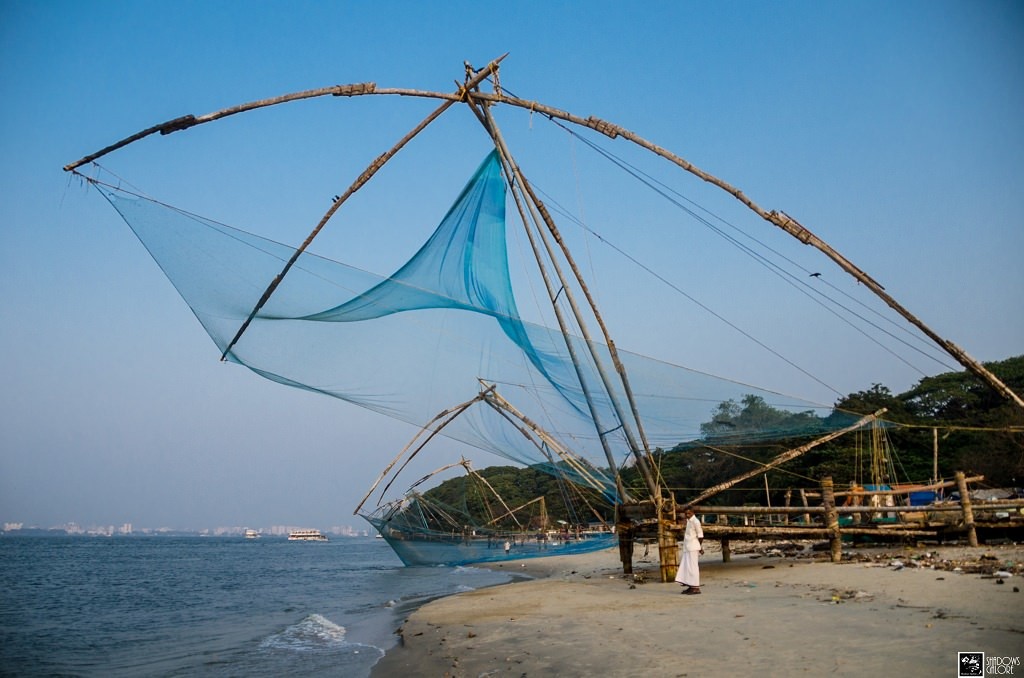
The area near the beach is also called the Vasco De Gama square, apparently, a landmark where the explorer had first landed in the city. However, it is just a landmark and you won’t really be able to find anything more than a signboard if you tried looking for it. A statue would have been done better, given our fondness with statues.
The sea at this beach is calmer than some other places in Kerala that we have been to. A walkway had tourists and locals taking a stroll in the evening. There are some eateries selling snacks and seafood and sittings areas where people gather to have a chit-chat. Remnants of old Fort Emmanuelle are visible at some places on this walkway. There was about half a dozen of those cantilever fishing nets, each manned by 3-4 fishermen. The nets attracted hoards of curious onlookers like us, and we spent some time trying to figure out how those contraptions worked. The nets look very beautiful in the lights of the setting sun but we had another appointment to keep.
Sidenote: The litter strewn at the beach, especially near the nets, bothered us a lot. There was so much garbage at places that it made the area nearly impossible to walk on. Kerala is usually a very clean place and I am not sure why the authorities and people are not doing much to keep the beach clean as well.
Watching Kathakali in Fort Kochi
There was a trade-off between watching the sunset on the beach or attend the Kathakali performance and we ended up choosing the latter. We had lingered around the fishing nets for a little more than appropriate and had to rush back in an auto to catch the event in time.
There are a few centres in Cochin that showcase the performing arts of Kerala, however, we have always found the Kerala Kathakali Centre to be sincerer and less touristy. It is a nice traditional place with an airconditioned hall and extremely friendly people.
Kathakali is a major classical dance form of India and developed in Kerala by the 17th century AD. It is a ‘story-play’ genre of dance where the performers tell a story from ancient Indian texts like the Ramayana and the Mahabharata. The uniqueness of this dance form lies in the elaborate and colourful makeup, facemasks and costumes that the all-male crew wears.
Nakrathundi
Today’s performance was based on a scene from the play Narakasura Vadham, based on the Bhagavata Purana, originally written by Maharaja Karthika Thirunan in the 18th Century AD.
Narakasura’s sister, the demoness princess Nakrathundi, took the form of a beautiful maiden and tried to seduce Indra’s son, Jayanthan. Having failed in her attempt, she comes to her trued form and attacked Jayanthan, only to be slain by him.
For an hour, we sat enthralled by the performance in a jam-packed auditorium and came out happier, and secretly proud of our heritage. If you happen to be visiting Cochin, we strongly recommend that you go to this place and watch a performance. You will not return disappointed.
We even made a small video of this performance. Do watch it if you are interested.
Finishing it off with a Biryani at the Rahmathullah Hotel
Ever since I started doing research on what to eat in Fort Kochi, the name of Rahmathullah Hotel would invariably crop up. So once we were done with our day tour, we decided to end the day with a biryani at this place. A short auto ride the winding lanes of Mattancherry took us there and then we set out to have perhaps one of the best biryanis that I have ever eaten.
Biryani in itself is the proven food of the God. Now add some spicy magic of Kerala to it, and you have this incredible green coloured biryani. It was beyond delicious and only the fear of falling sick prevented me from ordering yet another place. The prices are very reasonable and two plates are the minimum you should have. I so wish that they had a branch in Pune!
Finally…
The neat tree-lined streets of Fort Kochi have an old world magic that finds a resonance in its composite architecture, art, and culture. One of the oldest cosmopolitan cities with residents from all over the world, this beautiful place is a natural charmer and does not let go. For anyone visiting Kerala, it is always a great idea to spend at least a day at this place and explore the rich bounties that it offers to its visitors. This was our second trip to this city and certainly won’t be the last.
Till then, Vida…

